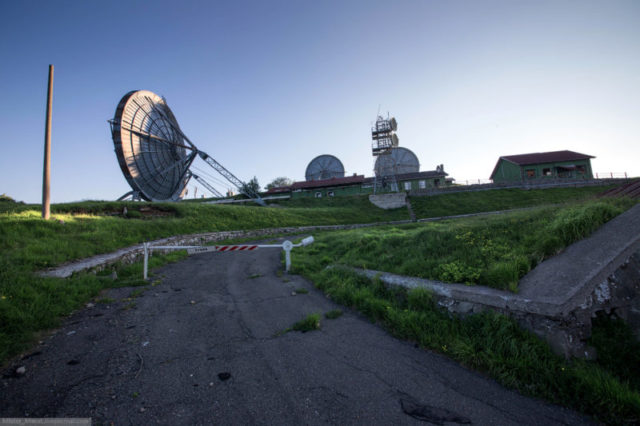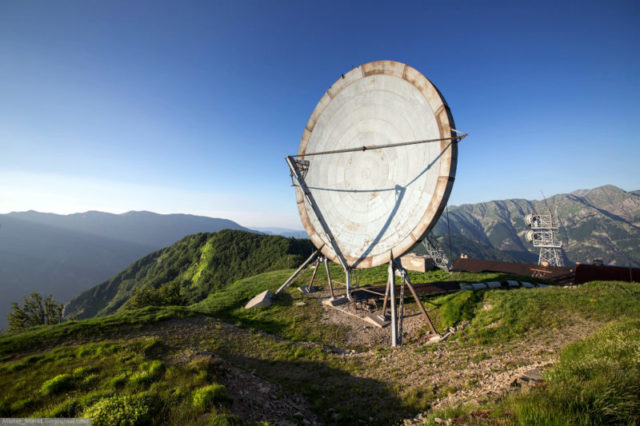Cold War: The abandoned NATO radiocommunication station IMXZ-Livorno at Monte Giogo in the Italian Alps — more romantically known by the urbex codename “Ice Station Zebra” — was built in the late 1950s as part of the Cold War ACE High network.
Located at the end of a precipitous, winding, and unmaintained track at an elevation of around 4,900 feet (1,500 meters), the Livorno station has four parabolic antennae measuring 65 feet (20 meters) in diameter.
Two of them are pointed towards France while the other two face the Tolfa station near Rome. There are also a few smaller dishes.
The large dishes can be seen from several miles away; since they’re supposed to be secret objects, they’re not particularly well hidden. However, the mountainous landscape is breathtaking — who would have thought that a military object would be placed here?
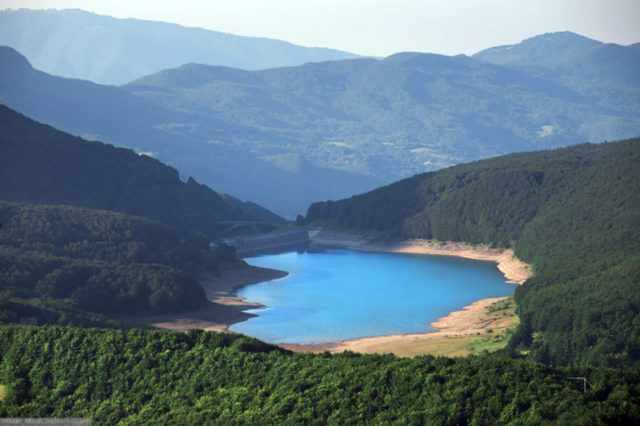
So, what was ACE High? “ACE” stands for Allied Command Europe, and “High” presumably refers to the ultra-high radio frequencies (UHF) used by the network.
It was a troposcatter radio system intended to serve as an early warning system, securely passing information at high speed from the eastern borders of the Atlantic Alliance to NATO’s Supreme Allied Commander Europe (SACEUR).
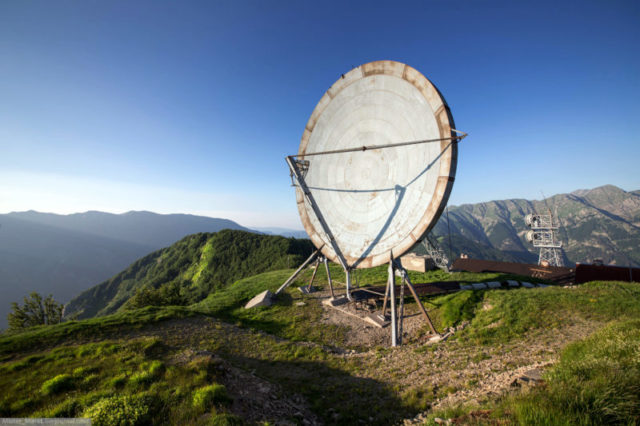
Troposcatter networks were an early form of over-the-horizon transmission. The technique works by essentially bouncing ultra-high and super-high frequency radio waves against the troposphere (5 to 10 miles above the Earth), from where they are reflected toward the next receiver.
The benefit of this, of course, is that information can be relayed over long distances via fewer stations than by traditional line-of-sight radar communication.
The technology was rendered obsolete by the development of satellite communications in the 1970s, but much of the ACE High system remained in use until the early 1990s.
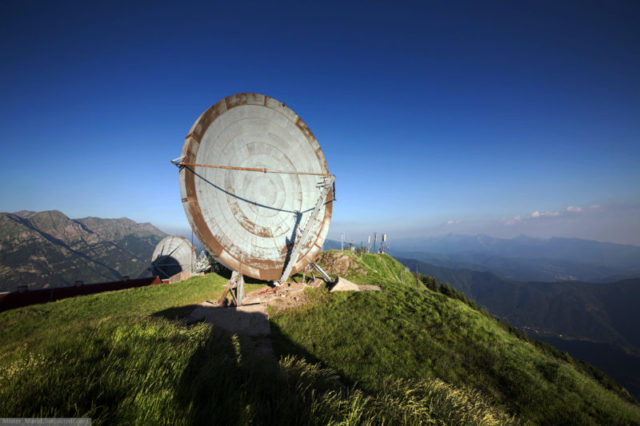
ACE High, incorporating 49 tropospheric scatter links and 40 line-of-sight microwave links, stretched out across a line 2,490 miles (4,000 km) long, from the far north of Norway to southeastern Turkey.
From the Faroe Islands station, it connected to command centers in Greenland, Canada, and Alaska via other NATO communications systems: the North Warning troposcatter network, the DEW line network, and the Withe Alice Communications System.
As a quick refresher, the North Atlantic Treaty Organization (NATO) was formed while the world was still coming to terms with the aftermath of WWII.
With tensions rapidly rising between the USSR and the Western Allies, the North Atlantic Treaty was signed on April 4, 1949, “to provide collective security against the Soviet Union,” according to the US Department of State’s Office of the Historian.
Less than one year after the “hot” war had come to a close, during a speech at Westminster College in Fulton, Missouri in March 1946, former British Prime Minister Winston Churchill declared that “from Stettin in the Baltic to Trieste in the Adriatic, an iron curtain has descended across the continent.”
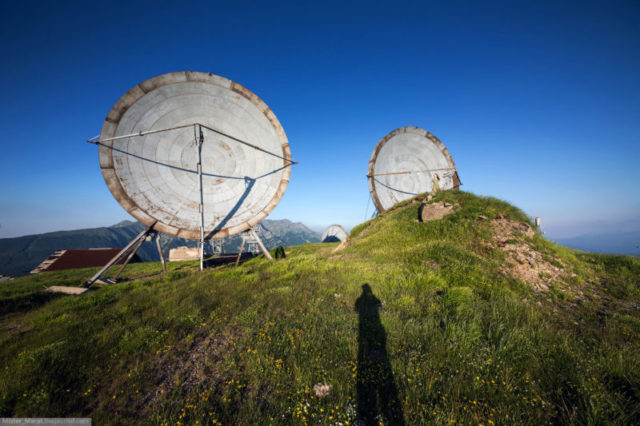
By the 1950s, the world was firmly divided into East and West — despite the pledged allegiance of countries on both sides under the 1942 Declaration by United Nations, which had united them in their fight against the Axis powers of WWII.
Soviet leader Nikita Khrushchev, who came to power in 1953, responded to the formation of NATO by creating the Warsaw Pact. As the 1950s came to a close, nuclear weapons were being stockpiled and openly tested as a show of strength by both East and West. As the Cold War heated up, the threat of a nuclear strike was very real.
ACE High was considered a critical communication link in the NATO “tripwire” retaliation strike plan, and Livorno was one of the key stations in the network.
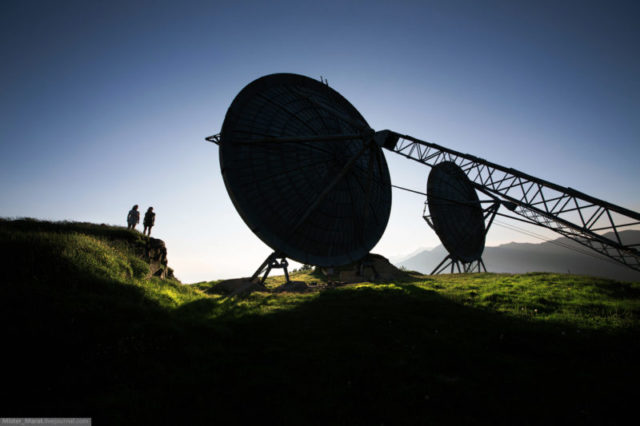
The 5-acre site operated from 1958 until 1995. It is still managed by NATO, but in 2005, permission was granted to a group of amateur radio enthusiasts to refurbish the radio systems for civilian use. Italian newspaper La Repubblica Parma reported in November 2011 on the success of their endeavor to breathe new life into the equipment.
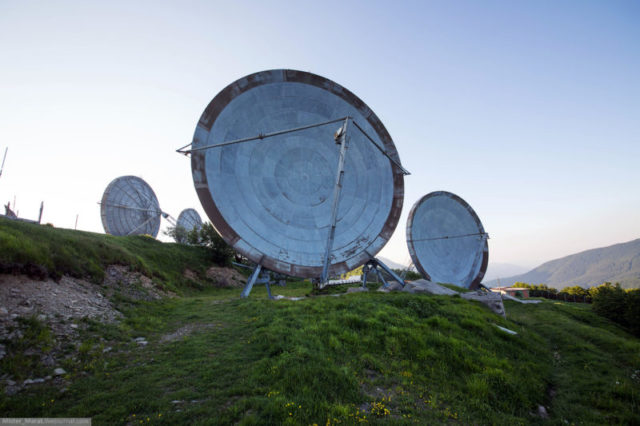
Explorers who have posted online about the site more recently noted that it appears defunct and deserted, although the dishes are in very good condition. Sadly, many of the buildings are in disrepair, and the site has suffered much vandalism over the years.
Huge thanks to Marat Dupri for the photos! Check out his Facebook or Mister_Marat on Livejournal for more great images.
Another Article From Us: Derelict Third Reich Training Camp Deep in The Woods
